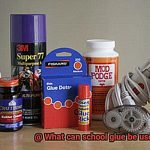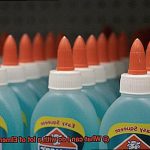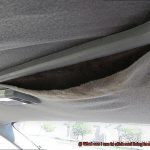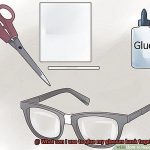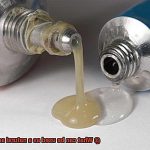Welcome to the fascinating world of woodworking and craftsmanship, where an ancient adhesive called hide glue has been the go-to choice for centuries. Made from animal hides, this sticky concoction has won the hearts and hands of artisans worldwide.
But like any traditional technique, it’s important to shed light on its drawbacks.
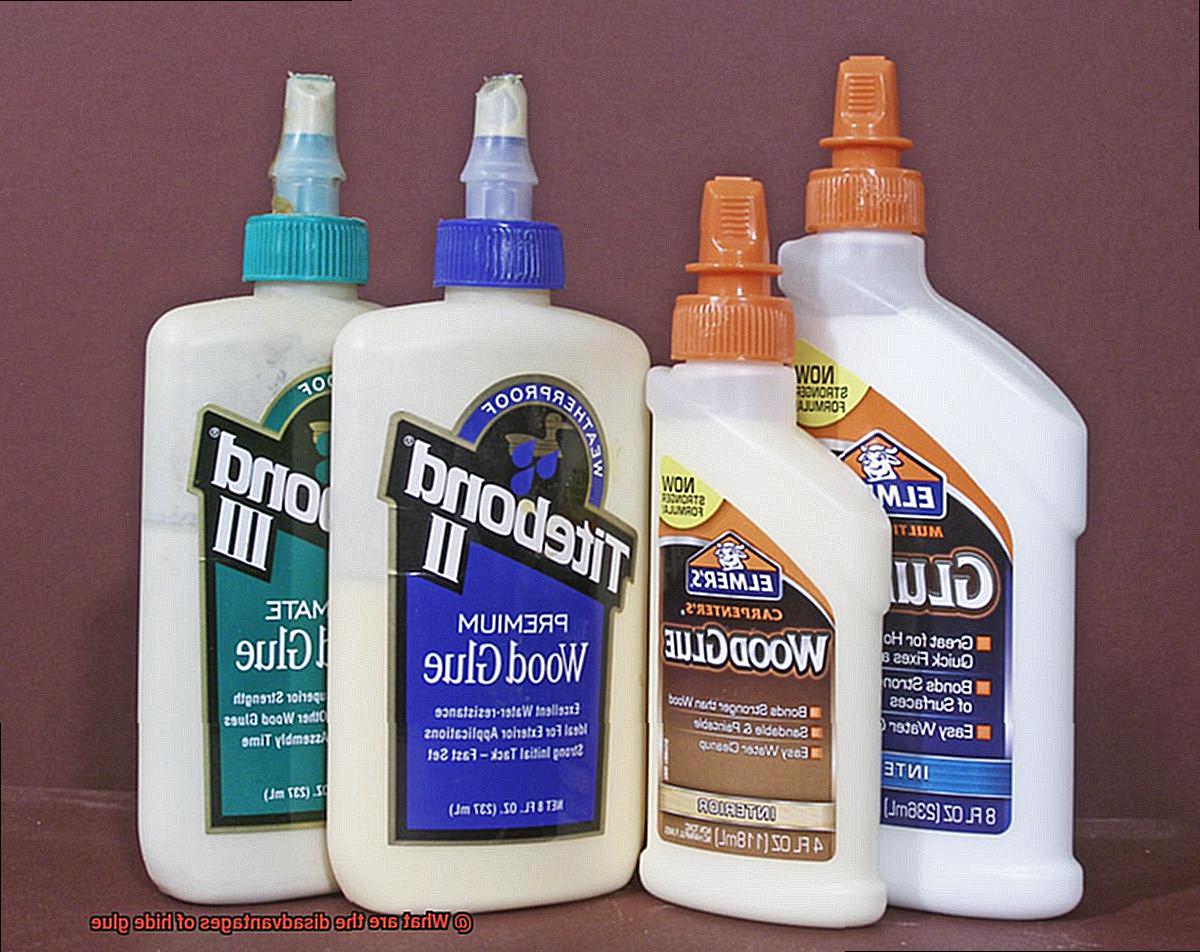
In this blog post, we’ll dive into the dark side of hide glue and explore its disadvantages.
While many craftsmen swear by it, understanding its downsides can help make informed decisions when selecting the right glue for your projects.

So let’s uncover the truth about hide glue.
What are the disadvantages of hide glue?
Contents
- 1 What are the disadvantages of hide glue?
- 2 Sensitivity to Moisture
- 3 Limited Shelf Life
- 4 Challenging Application Process
- 5 Susceptibility to Insect Infestation
- 6 Brittleness Over Time
- 7 Limited Compatibility with Certain Materials
- 8 Incompatible with Flexible Applications
- 9 Other Considerations
- 10 Conclusion
Sensitive to Moisture:
One major disadvantage is that hide glue is sensitive to moisture. When exposed to high humidity or wet conditions, it loses potency and becomes less reliable. This poses challenges for outdoor construction projects or humid workshops where moisture is prevalent.
Limited Shelf-Life:
Unlike modern alternatives, hide glue has a relatively short shelf-life. If not stored properly, it can deteriorate, crystallize, or even become moldy over time. This means you need meticulous storage conditions, including controlling temperature and humidity.
Requires Prepping and Patience:
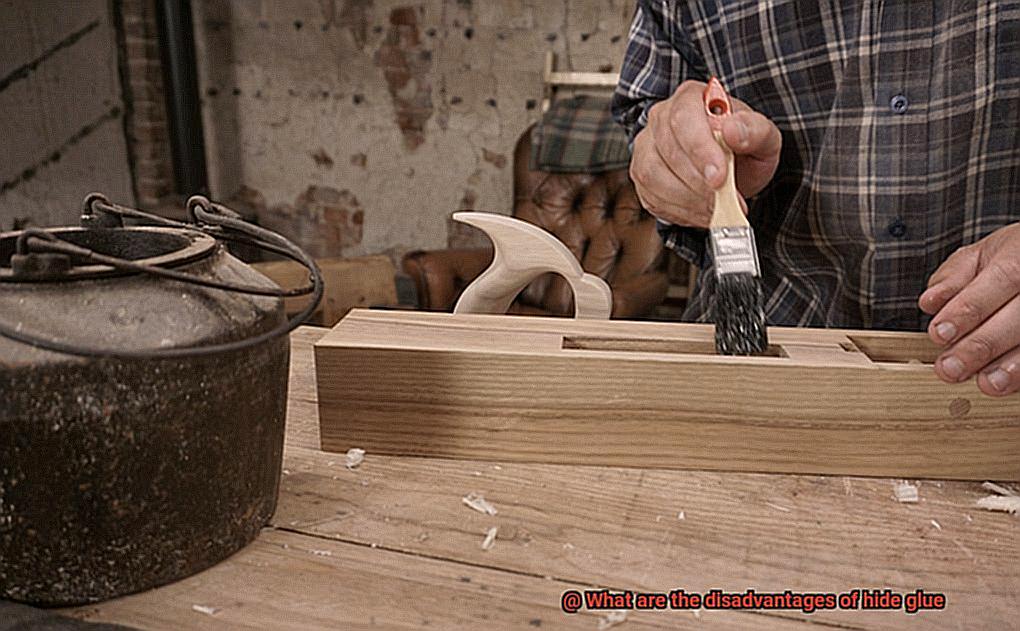
Using hide glue demands preparation and patience. Unlike squeeze tubes of synthetic glues, hide glue usually comes in powdered or granular form.
Craftsmen must dissolve it in water and wait for it to cool down before application.
This extra step can be time-consuming and hinder spontaneity in fast-paced woodworking projects.
Vulnerable to High Temperatures:
The biggest Achilles’ heel of hide glue is its vulnerability to high temperatures. Once cured, it reverts back to liquid form when exposed to heat – a disaster for projects facing warm climates or direct sunlight. It also poses problems during machining processes that generate heat.
This limits its versatility and durability in various applications.
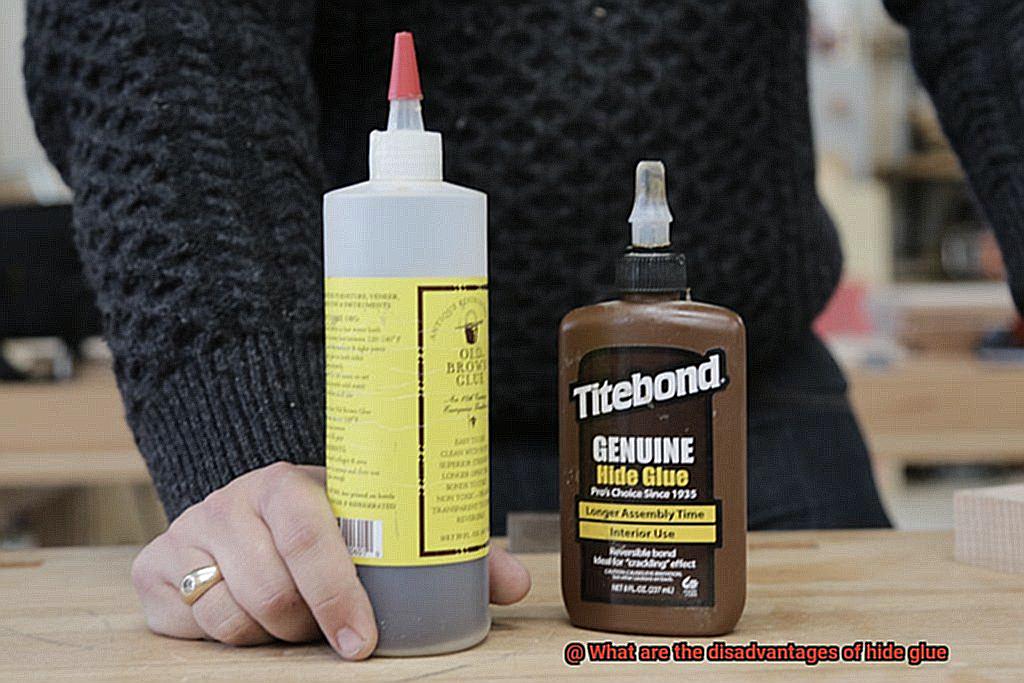
While hide glue has a cherished place in the history of craftsmanship, it’s not without its disadvantages.
Its sensitivity to moisture, limited shelf-life, need for preparation, and vulnerability to high temperatures are factors that craftsmen need to consider.
Sensitivity to Moisture
For centuries, craftsmen and artisans have relied on hide glue, a traditional adhesive made from animal collagen, to create enduring works of art. However, a significant drawback of this time-honored method is its sensitivity to moisture. In this article, we will delve into the effects of moisture on hide glue and explore precautions that can be taken to prevent potential issues.
Effects of Moisture on Hide Glue:
Moisture can wreak havoc on hide glue, causing a range of problems that can compromise both the structural integrity and aesthetic appeal of glued objects. Here are some key effects to be aware of:
- Loss of Adhesive Properties: When exposed to high humidity or water, hide glue can weaken or disintegrate, leading to a loss of adhesion. This means that joints or seams may come apart, jeopardizing the entire structure.
- Swelling and Softening: Moisture causes hide glue to swell and soften, further weakening the bond. Consequently, joints may fail, resulting in potential damage to the object being glued.
- Mold and Fungal Growth: The sensitivity of hide glue to moisture creates an ideal environment for mold and fungal growth. This not only weakens the bond but also poses health risks and detracts from the visual appeal of the finished project.
Preventing Issues:
To ensure the longevity and durability of your creations when using hide glue, it is important to take proper precautions against moisture-related problems. Here are some effective preventative measures:
- Clean and Dry Surfaces: Before applying hide glue, thoroughly clean and dry the surfaces that will be bonded together. Even a small amount of moisture present on these surfaces can compromise the adhesive bond.
- Protective Coatings or Finishes: Applying a protective coating or finish over the glued area creates a barrier against moisture, significantly reducing the chances of adhesive failure. This extra layer of protection can help ensure the longevity of your glued objects.
- Consider Alternative Adhesives: In situations where exposure to moisture is inevitable, it may be wise to consider alternative adhesives that are specifically designed to be waterproof or resistant to moisture. Modern synthetic adhesives offer excellent performance in such conditions.
Limited Shelf Life
Made from animal collagen, this organic material naturally degrades over time, giving the glue an expiration date. So, if you’re thinking of stockpiling hide glue for future woodworking projects, think twice.
Moisture is one of the main culprits behind hide glue’s limited shelf life. It has a knack for absorbing moisture from the air, which gradually reduces its effectiveness. Weak bonds and decreased adhesion strength are certainly not what you want when working on a masterpiece.
Temperature fluctuations also play a role in hide glue’s demise. Extreme heat or cold can cause the glue to break down and lose its adhesive superpowers. So, beware of sweltering summer days or freezing winter nights.
But wait, that’s not all. Hide glue is like a buffet for bacteria. Being an organic material, it becomes a feast for bacteria if not stored properly. To prevent any unwanted bacterial growth, keep your hide glue in a cool, dry place and seal it tightly after each use.
Don’t worry. Even though hide glue has a limited shelf life, you can still test its effectiveness through a small sample before applying it to your precious project.
If dealing with the limitations of hide glue doesn’t suit your needs or you require longer storage periods, alternatives like synthetic adhesives or epoxy glues have longer shelf lives.
Despite its limited shelf life, hide glue remains beloved by woodworking professionals and enthusiasts. Its unique properties and ease of repair or reversal make it a go-to choice for many.
Challenging Application Process
The application process for hide glue can be quite challenging, requiring attention to detail and careful execution. Here are some of the key challenges you may encounter when working with this traditional adhesive:
- Preparation Process: Unlike modern adhesives that come ready to use, hide glue requires significant preparation. The glue granules need to be soaked in water and allowed to dissolve and swell for a specific amount of time. This process can be time-consuming and requires precision to ensure the glue is prepared correctly.
- Temperature Control: Hide glue has a specific working temperature range within which it can be applied effectively. If the glue gets too cold, it becomes thick and difficult to work with, while if it gets too hot, it becomes thin and may not bond properly. Maintaining the optimal temperature throughout the application process can be challenging, especially for beginners.
- Limited Working Time: Hide glue sets relatively quickly once applied, leaving a limited window for adjustments or repositioning. This can be challenging for complex projects that require precise alignment and adjustments. Working quickly and efficiently is essential to achieve the desired results.
- Short Shelf Life: Once hide glue is mixed with water, it starts degrading and losing its adhesive properties within a certain timeframe. This means that you need to plan your projects accordingly and use the adhesive soon after preparing it. If not used promptly, the adhesive may lose its effectiveness.
- Challenging Cleanup: Hide glue forms a strong bond that is not easily removable like some modern adhesives. Any excess glue or spills need to be carefully scraped or sanded away, which can be time-consuming and potentially damaging to the workpiece if not done correctly.
Susceptibility to Insect Infestation
As we embark on this journey, let us explore the intricate relationship between hide glue and bugs, uncovering the consequences and potential solutions to this intriguing conundrum.
The Buzz about Insects and Hide Glue:
- A Tempting Feast: Derived from animal collagen, hide glue becomes an exquisite delicacy for insects like beetles and termites. Their innate attraction towards organic materials transforms any item glued with hide glue into an irresistible buffet.
- Targeted Vulnerability: Wooden furniture, musical instruments, and artwork that rely on hide glue become prime targets for insect infestation. The harmonious combination of organic wood and hide glue invites insects to indulge in a delectable feast.
- Structural Devastation: Insects can wreak havoc by burrowing into both the glue joints and the wood itself. This relentless assault compromises the structural integrity of the item, paving the way for instability and potential failure.
- The Ugly Consequences: In addition to weakening glued joints, insect infestation leaves behind a trail of unsightly holes, tunnels, and overall deterioration on the once-pristine surface. This grim reality is far from desirable for cherished antique chairs or valuable violins.
Preventing Infestation: Unleashing a Bug’s Worst Nightmare:
- Vigilance as Armor: Regular inspection acts as a formidable shield against pesky bugs. Look out for signs of infestation, such as minuscule exit holes or sawdust-like frass near glued areas.
- Maintenance is Key: Proper upkeep involves keeping glued items clean and dry, discouraging insect activity. Moisture acts as a siren call, attracting insects like moths to a flame.
- Insecticidal Intervention: Swiftly address any unwanted guests by treating affected areas with insecticides or other preventive measures recommended by professionals.
While hide glue possesses undeniable merits in various applications, its susceptibility to insect infestation remains a significant drawback. For those seeking long-term durability, alternative adhesive options like synthetic adhesives or epoxy may be worth considering.
With attentive care and unwavering vigilance, the distinctive properties of hide glue can still be enjoyed without extending an invitation to unwelcome six-legged visitors.
Brittleness Over Time
Today, we delve into the intriguing world of hide glue, a fascinating adhesive with a long history. However, like all things, it comes with its drawbacks. One such disadvantage is the dreaded brittleness that creeps in over time. Let’s explore the factors contributing to this issue and equip ourselves with knowledge to overcome it.
Organic Composition:
Hide glue, also known as animal glue, boasts an organic composition derived from animal connective tissues. While this natural origin grants it a certain charm, it also means that it is inherently susceptible to degradation. Over time, the natural proteins in hide glue begin to break down, gradually diminishing its adhesive strength and paving the way for brittleness to take hold.
Sensitivity to Environmental Conditions:
Our dear hide glue is a sensitive soul, deeply affected by changes in temperature and humidity. Fluctuations in these environmental conditions can cause the glue to expand and contract, weakening its bond and intensifying its brittleness. This becomes particularly troublesome in environments with high humidity or extreme temperature variations, where hide glue’s fragile nature can be fully exposed.
Improper Application:
Alas, even the finest adhesive can succumb to misfortune if not handled with care. Improper application or preparation of hide glue can lead to suboptimal adhesive properties. If the glue is not mixed or heated correctly before use, it may fail to achieve its full potential strength. This compromises the bond quality and sets the stage for increased brittleness over time.
Consequences of Brittleness:
The brittleness of hide glue can have dire consequences in various applications:
- Woodworking: Joint failure or wood damage may occur when glued parts become separated or cracked due to brittleness.
- Bookbinding: Pages may detach or tear if the adhesive loses its flexibility and becomes brittle.
- Musical instrument construction: Brittleness can impact both sound quality and structural integrity, affecting the performance and longevity of the instrument.
Limited Compatibility with Certain Materials
This enigmatic adhesive boasts a rich history and unparalleled bonding strength. However, it is not without its limitations. In this blog post, we will explore the intriguing phenomenon of hide glue’s limited compatibility with certain materials, unraveling the secrets behind its mesmerizing yet finicky nature.
The Nature of Hide Glue:
Hide glue, also known as animal glue, derives its power from collagen extracted from animal bones and connective tissues. Its exceptional bonding capabilities have made it a favored choice in woodworking, bookbinding, and musical instrument making for centuries. However, when it comes to non-porous materials like metal or plastic, hide glue’s powers wane, leaving craftsmen searching for alternative solutions.
The Moisture Conundrum:
Hide glue requires moisture to activate its adhesive properties and form a strong bond. This poses a challenge when dealing with non-absorbent materials that lack moisture content. Metals and plastics, with their impermeable surfaces, prove to be formidable adversaries for hide glue.
A Slippery Slope:
Smooth or glossy surfaces present another hurdle for hide glue. Its organic composition struggles to adhere effectively to these polished surfaces, resulting in weak bonds that are prone to failure.
Weathering the Storm:
Hide glue’s vulnerability to moisture and temperature changes adds another layer of complexity to its compatibility issues. Excessive exposure to moisture can cause deterioration over time, weakening bonds and compromising the integrity of the project. Similarly, extreme heat or cold can alter hide glue’s properties, leading to softened or melted adhesives that fail to hold strong.
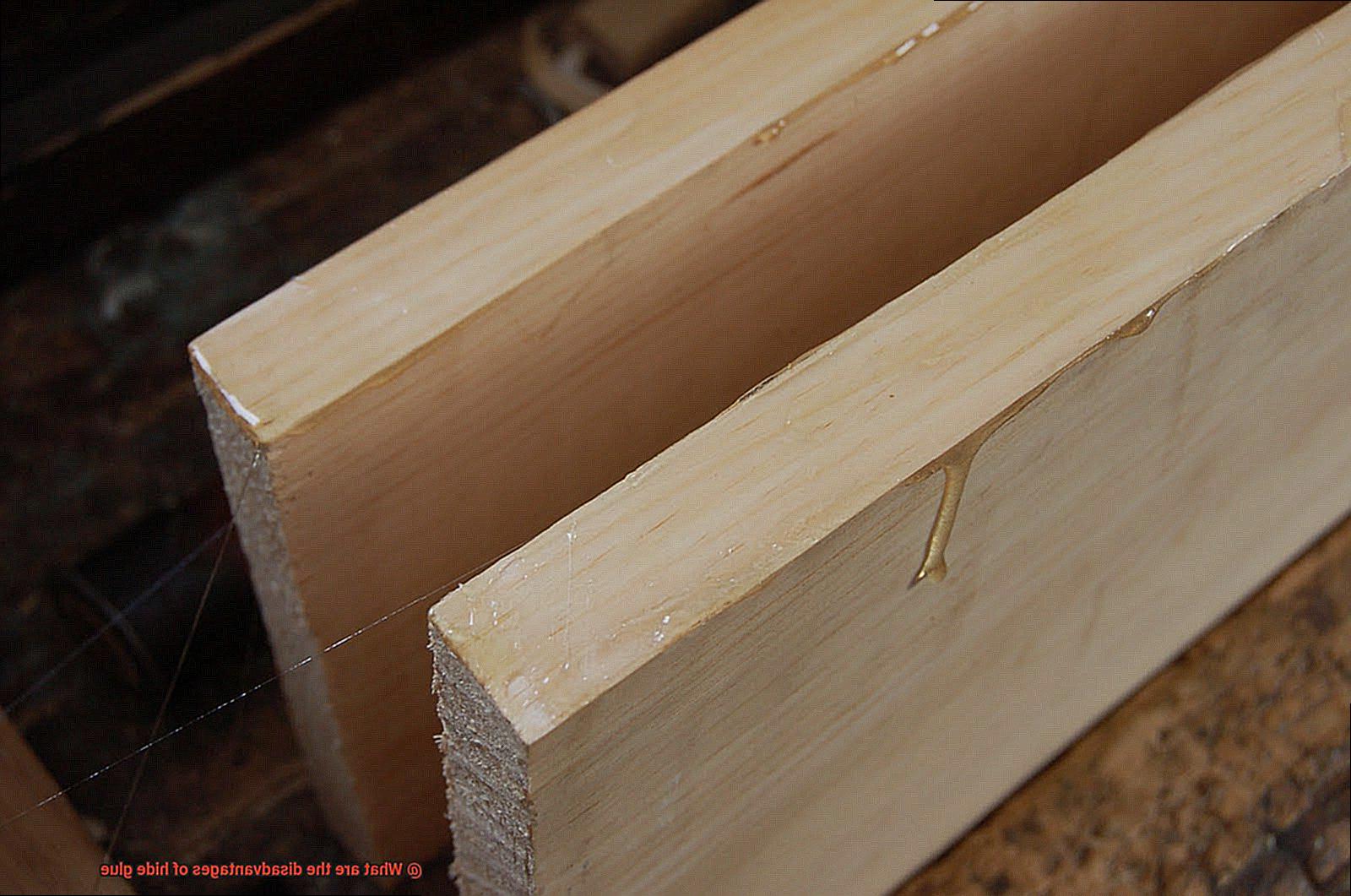
A Silver Lining:
Amidst its compatibility challenges, hide glue possesses a redeeming quality – reversibility. Unlike modern synthetic adhesives that form permanent bonds, hide glue allows for easy separation and reapplication if needed. This feature proves invaluable in restoration or repair work, where the ability to undo and redo becomes a saving grace.
Incompatible with Flexible Applications
Step into the captivating world of hide glue, an ancient adhesive with a storied past and unmatched bonding strength. But beware. Like a finicky magician, it reveals its limitations when faced with flexible materials. In this enchanting blog post, we’ll delve into the intriguing phenomenon of hide glue’s limited compatibility, unlocking the secrets behind its mesmerizing yet temperamental nature.
The Brittle Reality:
One major disadvantage of hide glue is its tendency to become brittle over time, especially in dry conditions. This brittleness makes it unsuitable for flexible applications where materials undergo frequent movement or bending. When subjected to repeated flexing or stretching, hide glue can crack and break, leading to the failure of the bond.
Moisture Sensitivity:
Hide glue’s water-soluble nature makes it highly sensitive to moisture. When exposed to moisture or high humidity levels, hide glue can easily dissolve or soften. This weakens the bond and causes the glued materials to separate. In flexible applications where materials may be subjected to moisture, using hide glue can result in bond failure.
Heat and Cold Weaknesses:
Hide glue has poor resistance to heat and cold, making it ill-suited for flexible applications exposed to varying temperatures. Extreme temperatures can cause the glue to expand or contract, leading to bond failure. In contrast, modern synthetic adhesives like epoxy or cyanoacrylate are formulated specifically for flexibility and temperature resistance.
The Superiority of Modern Synthetic Adhesives:
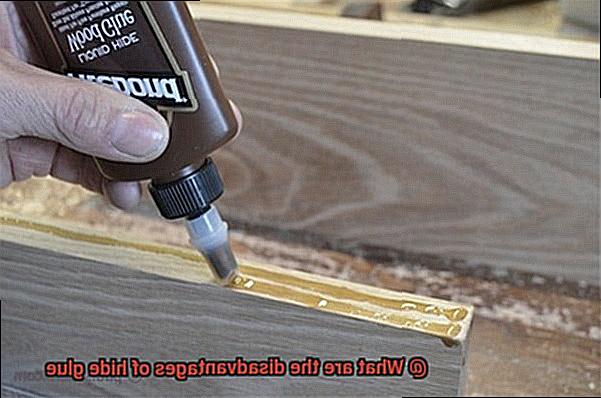
Modern synthetic adhesives offer superior flexibility, temperature resistance, and moisture resistance compared to hide glue. These adhesives are specially formulated to withstand the challenges of flexible applications.
They can endure repeated flexing and stretching without cracking or breaking, ensuring a long-lasting bond. Additionally, they can resist moisture and high humidity levels, preventing bond failure in wet conditions.
Moreover, modern synthetic adhesives have excellent resistance to extreme temperatures, allowing them to maintain their bond integrity even in the face of heat or cold exposure.
Other Considerations
When considering the use of hide glue, there are several other important factors to take into account. These considerations can help you make an informed decision and determine whether hide glue is the right adhesive for your project.
Firstly, durability is a significant concern when it comes to hide glue. Unlike modern synthetic adhesives, hide glue may not offer the same level of strength and longevity. It can be vulnerable to the effects of moisture and temperature changes, which can cause it to weaken or even fail over time. This fragility can be a significant disadvantage, especially in applications where strong and durable bonding is essential.
Another consideration is the reversibility of hide glue. While this characteristic can be advantageous in certain situations, such as antique restoration or instrument repairs, it can also be a drawback in applications where long-term bonding is desired. If exposed to moisture or high humidity, hide glue can lose its strength and potentially come undone.
Furthermore, hide glue has a sensitivity to moisture that must be taken into account. Excessive humidity or water exposure can soften the glue and compromise its adhesive properties. This can be problematic in environments with high humidity levels or when the bonded materials are frequently subjected to contact with water. In these cases, alternative adhesives that offer better resistance to moisture may be more suitable choices.
Additionally, hide glue has a limited shelf life compared to some synthetic adhesives. Once mixed with water and heated for use, it needs to be used within a certain timeframe before it becomes unusable. This can be inconvenient for projects that require multiple applications or for individuals who do not frequently use hide glue and may find it challenging to utilize an entire batch before it spoils.
Lastly, it’s important to consider the potential allergenic nature of hide glue. As it is derived from animal collagen, individuals with sensitivities to animal proteins may experience allergic reactions when working with hide glue. Proper precautions, such as wearing gloves and avoiding direct contact with the glue, should be taken. For those concerned about allergies, alternative adhesives that are free from animal-derived ingredients may be a safer option.
Qk11FJMLUUc” >
Conclusion
Hide glue, while a popular adhesive in certain industries, does have its fair share of disadvantages. One major drawback is its sensitivity to moisture. When exposed to high humidity or water, hide glue can lose its bond strength and fail to hold materials together effectively. This limitation makes it unsuitable for applications where moisture resistance is crucial, such as outdoor furniture or items that may come into contact with water.
Another disadvantage of hide glue is its limited shelf life. Unlike synthetic adhesives that have a longer lifespan, hide glue has a relatively short storage period. If not used within a certain timeframe, it can become spoiled and lose its effectiveness. This means that users must be mindful of the expiration date and ensure they use the glue before it goes bad.
Furthermore, hide glue requires special preparation before use. It needs to be heated and mixed with water to obtain the desired consistency. This extra step adds complexity and time to the application process compared to other adhesives that are ready-to-use straight from the container.
In addition, hide glue has lower heat resistance compared to some modern adhesives. It can soften or even melt when exposed to high temperatures, which limits its suitability for applications where heat resistance is essential, such as woodworking projects involving hot objects or environments.
Lastly, while hide glue offers reversible bonds that allow for repairability and restoration of wooden objects, this advantage can also be seen as a disadvantage in certain situations. The reversibility of hide glue means that it may not provide long-term durability compared to irreversible adhesives that create permanent bonds.
In conclusion, while hide glue has been used for centuries and still finds its place in various industries today, it does have several disadvantages worth considering.


